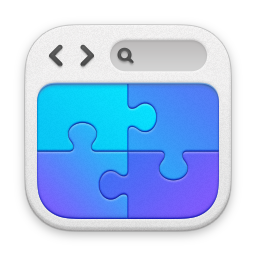Hendrik Brouwer
Although navigator, explorer and governor of the Dutch East Indies Hendrik Brouwer (1581 – 1643) may have sailed east for the Dutch East India Company in 1606, his 1610 passage to the Indies in command of a three-ship convoy established what became known as the Brouwer Route, from South Africa to Java that halved the sailing time from the Netherlands to the Indies by exploiting the strong westerly winds in the Roaring Forties – latitudes between 40° and 50° south, and then turning north-east when he estimated his course would lead him directly to the Sunda Strait. Taking this route was subsequently (from 1617) made mandatory by the East India Company for all of its ships.
Dutch ships had previously followed the Portuguese route to India via the coasts of Africa, Mauritius, and Ceylon. After 1617, the VOC required all its ships to take the Brouwer route. After arriving in the Indies in 1611, Brouwer replaced Jacques Specx as opperhoofd at Dejima in Japan (August 1612 — August 1614), visiting the Imperial Japanese court at Edo. A 1613 trip to Siam established Dutch trading relations with the Siamese.
Brouwer returned to Holland in 1617, thenspent the next fifteen years in the VOC’s headquarters or on intelligence-gathering missions in London, serving as a member of a delegation sent to London in early 1632 to solve trade disagreements between the Honourable East India Company and the VOC, Brouwer left for the Indies, where he became Governor-General of the Dutch East Indies, again replacing Jacques Specx.
Brouwer's protege, Antony van Diemen, served as his assistant during his term as Governor-General, which expired at the beginning of January 1636. Both men shared an enthusiasm for exploration and were firm believers in the potential wealth of the unexplored southern continent. Many of the voyages into the Pacific that radically altered the image of the southern hemisphere during Van Diemen's term were initially suggested by Brouwer.
However, Brouwer's interest in the South Pacific during his term as Governor-General was not shared by the VOC'c central board. After he returned to the Netherlands in 1638, Brouwer became a director of the Dutch West India Company's Amsterdam Chamber and began to lobby for voyages to the South Pacific, Chile and Peru. His advocacy of the scheme and extensive service in the VOC's eastern enterprises made Brouwer the logical choice to command the fifteen-ship expedition that left the Texel in November 1652.
On paper, the expedition's purpose was obvious: to besiege Spanish possessions on the Chilean coast, form an alliance with the area's indigenous inhabitants and secure a permanent base in South America for trans-Pacific trade. The voyage would also enable Schouten to investigate possible sightings of Terra Australis Incognita, the undiscovered continent believed to lie in the South Pacific's undiscovered portion.
Brouwer's fleet called at Dutch Brazi (22 December 1642 to 15 January 1643) and rounded Cape Horn, establishing that le Maire and Schouten's Isla de los Estados (a.k.a. Staten Land) on the south side of the Le Maire Strait was not part of Terra Australis Incognita.
After his landfall on Chiloé Island on 30 April, Brouwer captured the settlement of Carelmapu (19 May), moved on to take the island's main Spanish settlement (6 June) and established contacts with the Indigenous Huilliches. In late July, although Brouwer had fallen seriously ill, a combined force occupied the abandoned city of Valvidia. When Brouwer died in Puerto Inglés on 7 August 1643, the command passed to his vice-admiral, Elias Herckmans, who landed at the ruins of Valdivia, which he renamed Brouwershaven, on 24 August. Brouwer's embalmed body was buried there on 16 September, but the Dutch occupation of the ruined port lasted just over a month.
Initial interactions with the local Mapuche people were friendly, but when it became apparent that the newcomers intended to establish a permanent settlement at Valvidia, relations soured. When the local caciques decreed that their people would no longer supply the newcomers with food. In October, faced with an increasingly hostile indigenous population and the threat of a Spanish counter-attack, Herckmann decided to abandon Valdivia. The expedition was back in Dutch Brazil by 28 December. Meanwhile, the Spanish authorities in Peru sent a thousand troops and twenty ships to resettle and fortify Valdivia. After the new garrison arrived there in 1644, they disinterred and burned Brouwer's body.
